Disclosure: Meeple Mountain received a free copy of this product in exchange for an honest, unbiased review. This review is not intended to be an endorsement.
The Mobius Ring failed, A singularity formed and threatens to destroy our planet, And Dr. Martin Strobal was sent into a coma through the accident. Only he can get the Ring up and running. As one of the world’s best Comanauts, it’s up to you to jump into his irradiated mind and figure out how to snap him out of his coma. Do that, and he just may be able to save the world.
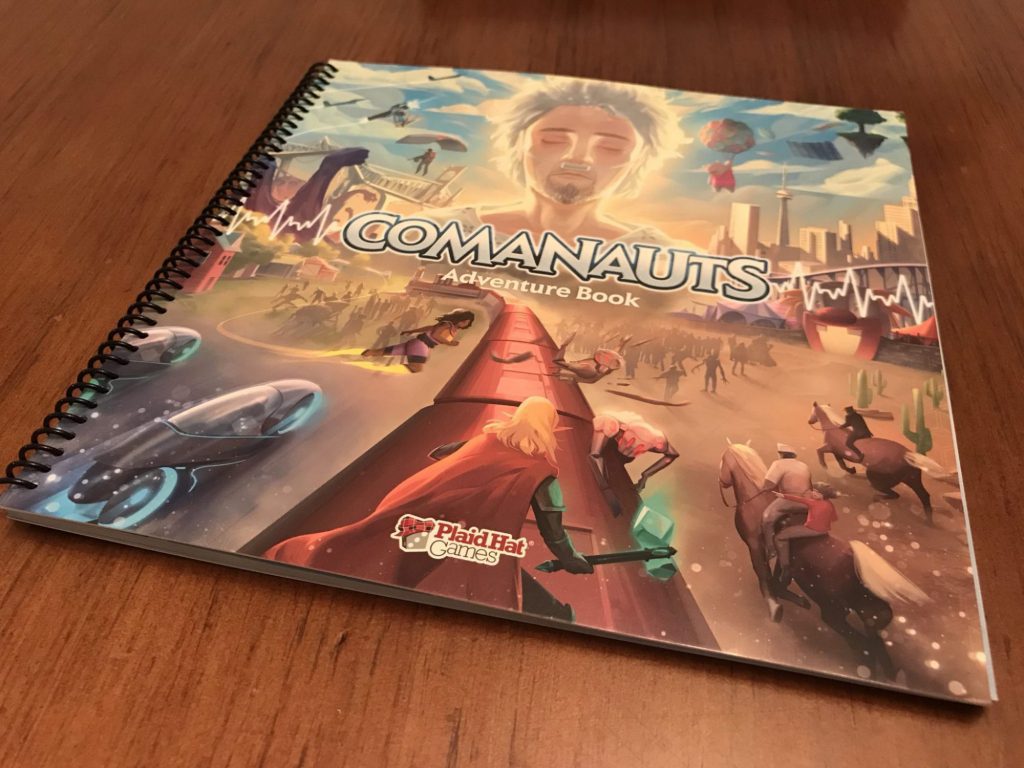
So begins a journey into the psyche of a brilliant scientist burdened with emotional wounds. Comanauts is the latest Adventure Book Game designed by Jerry Hawthorne of Stuffed Fables and Mice and Mystics fame. A cooperative game for 2 to 4 players, Comanauts builds upon the foundation Stuffed Fables laid by offering a challenging episodic adventure that blurs the lines between story and game with dice-driven action selection mechanisms.
The core of Comanauts’s gameplay revolves around the Adventure Book. Nearly 100 pages long, this spiral-bound component contains narrative passages and game instructions on the right side of most pages, and a corresponding “board” on the left side of the page. As players move through the eleven Comazone sections of the Adventure Book, they will increasingly reveal more of the history, challenges, and traumas experienced by Dr Strobal.
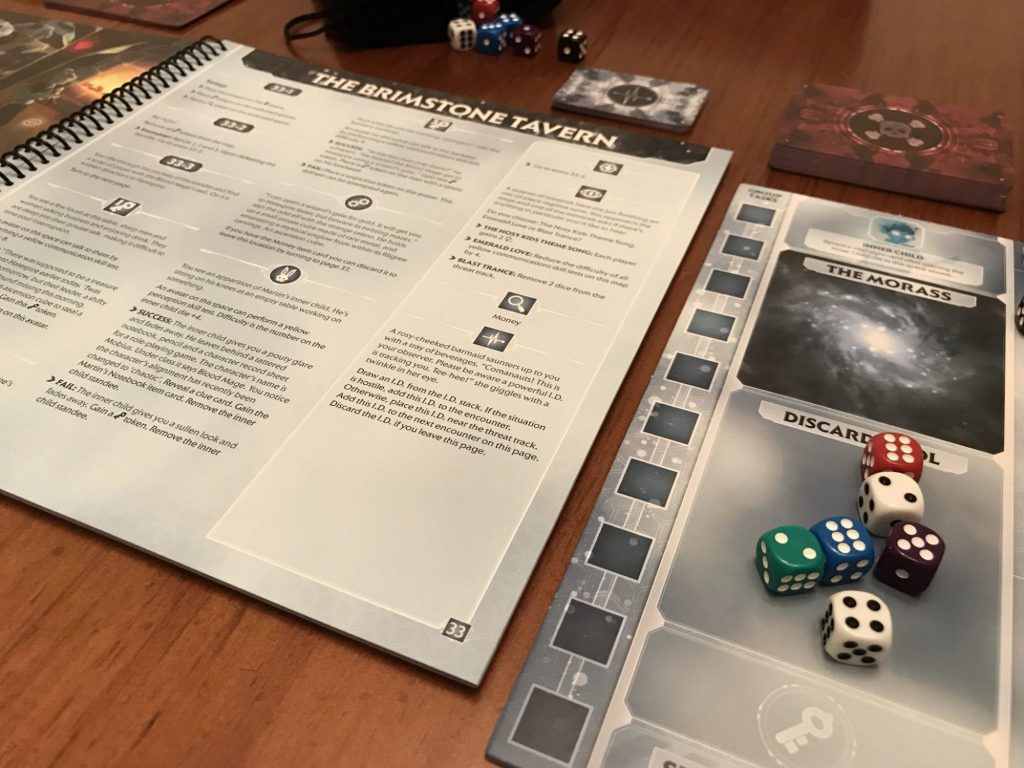
Mind Games
Players set up Comanauts by placing the Adventure Book in the center of the table and taking a character sheet. Each character sheet has a unique weakness that may trigger during gameplay. Players set aside the bag filled with different colors of dice that players will draw to perform actions throughout the game.
To enter Dr. Strobal’s mind, players will assume the role of avatars; characters that are somehow tied to the memories and experiences of Dr Strobal (more on these later). Every player will get two random avatars facedown on their character sheet, and then select one starting avatar from the remaining options. There are also a number of stacks of cards to set up including item, totem, vital sign, and hostile enemy cards. The most important of these are the I.D. Entity cards.
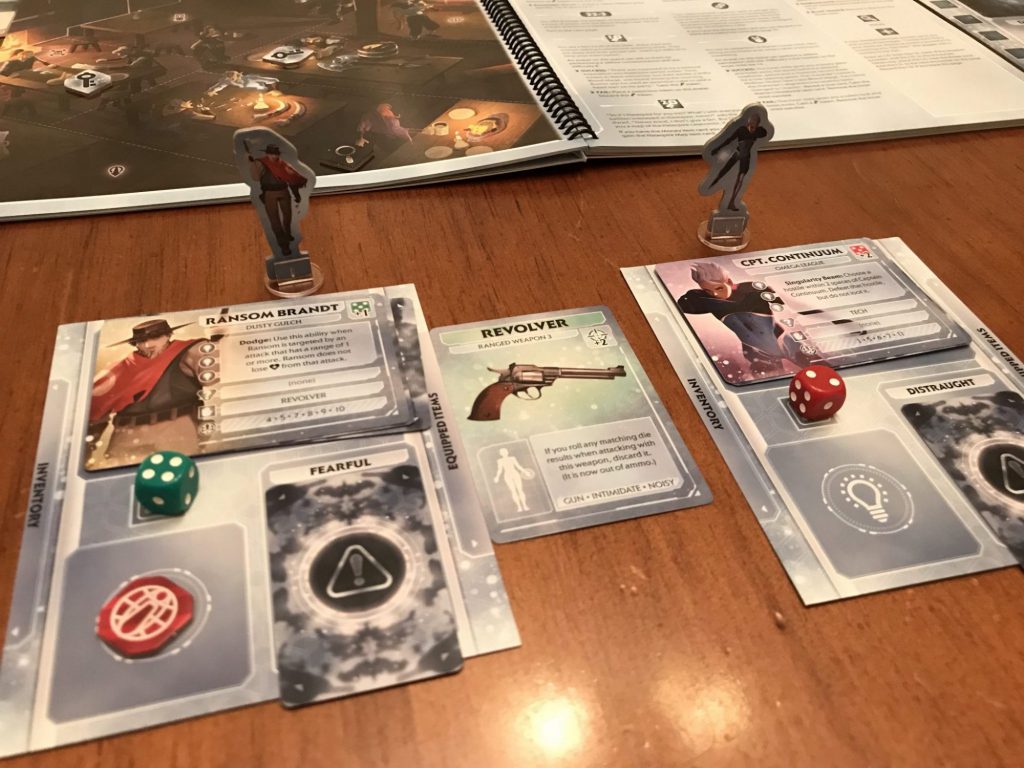
As you traverse through the Comazones of Dr. Strobal’s mind, you are hunting down the Prime I.D. Entity that is tormenting his subconscious, which functions like the “boss” you must battle. In each adventure, you will hunt a different Prime I.D. Entity which manifest as one of a number of torments like Pride, Fear, Grief, Regret, etc. In addition, each of these Entities is tied to one of the eleven Comazones. Players will draw five I.D. Entity cards and randomly select one to set aside face down. This is the Entity that the Comanauts are hunting. The rest are placed face down next to the Adventure Book and may be Entities that the players encounter during their journey.
Players start in a randomly drawn Comazone and follow the setup instructions on the corresponding page for that zone. Every Comazone will have unique rules for setup and gameplay. Comazones are generally made up of three board pages and three corresponding narrative pages. The objectives to complete each stage of that Comazone are embedded in the narrative passages.
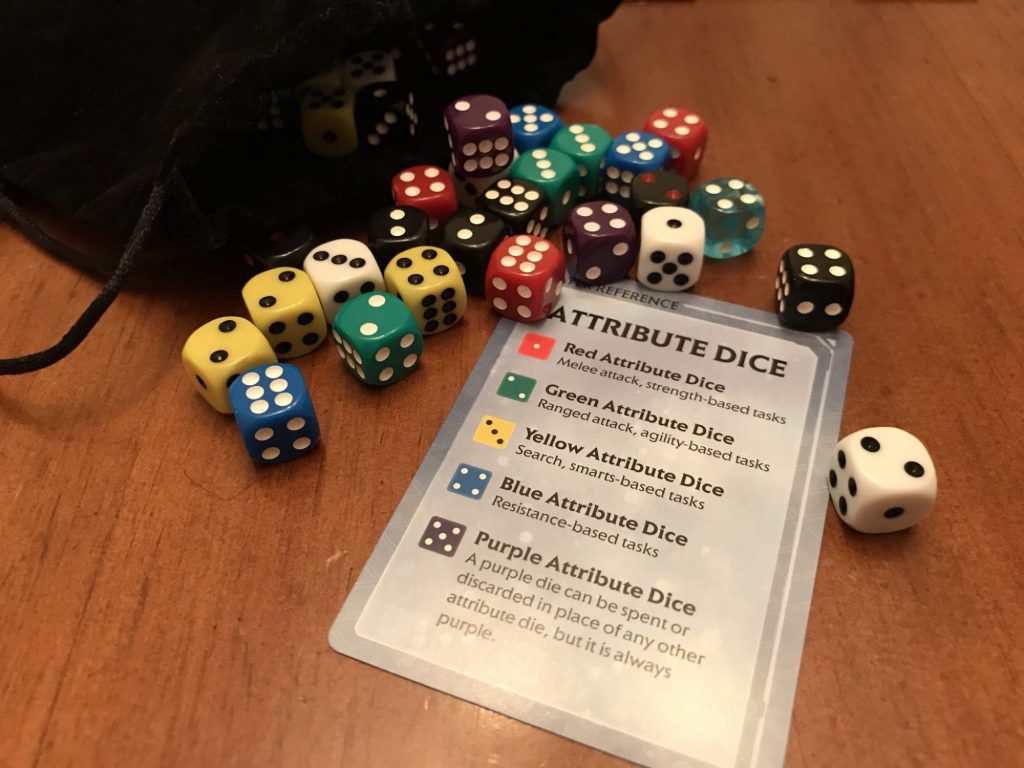
Players begin each of their turns by drawing five dice out of the bag to create the pool of actions they can take. Any color of the dice can be spent to move one space on the board (although certain spaces require a specific color of dice to traverse, as indicated by the rules on that page). Red dice can be used to perform a melee attack if a player’s avatar has a melee weapon equipped. Likewise, green dice can be used to perform a ranged attack with a ranged weapon. Yellow dice can be rolled to search for items in certain spaces on the board. Purple dice are “wild” and can be substituted for any of the other colors.
So far traveling through someone’s brain sounds pretty easy, right? Not so fast Professor Frizzle. Black dice are placed on the threat track of the board. As the threat track fills with these dice, it may cause enemies to spawn or activate, as indicated by the instructions on the Hostile cards. The enemies in each Comazone may start as non-threatening NPC’s, but the longer the players linger, the more suspicious they become. Dr. Strobal’s mind will try to protect itself from intruders, and docile allies may soon become dangerous threats. Hostiles will attack the player avatars and deal damage. If an avatar takes too much damage it is removed from play, and players become the next of their three available avatars.

Compounding the journey are the vitals of Dr. Strobal. As the game progresses players flip over vital signs cards which represent his stability as players are inside his subconscious. Some of these cards may trigger hostile effects in the game. If players reveal a Flatline card near the bottom of the vital signs deck, then they lose. Likewise, if all player avatars are eliminated they lose the adventure. Players win if they find and defeat the Prime I.D. for that adventure.
Dream Weaver
As a huge fan of Stuffed Fables I was incredibly excited to learn that Jerry Hawthorne was developing a new Adventure Book game. My wife and I have enjoyed Stuffed Fables for its cooperative gameplay and heartwarming story. The drawback we found was that it was a little simplistic (although great to play with kids) and not much of a challenge with its fail-forward design. When I first heard about Comanauts, it was touted as a Stuffed Fables for adults (yet not in the HBO-Game-of-Thrones kind of way). And I’ve found that true. It is much more challenging in it’s design, and players can actually lose adventures and have to start over. Moreover, whereas Stuffed Fables follows a child protagonist dealing with issues like potty training and going to school, Comanauts deals with much more interesting and deep subjects such as obsession, severely broken relationships, isolation, bullying, and abuse.
The difficulty ramp in Comanauts gives greater weight to the cooperative nature of the design. As players are taking actions with their dice, they may choose to empower an ally with them. This means a player can gift a dice to another player to store on their character sheet for use on a future turn. Storing dice is incredibly handy to increase your probability of success on certain actions, and can come in handy to defend yourself if attacked. Figuring out how to share dice toward each avatars strengths is a vitally important part of the game. Likewise each avatar has a unique special ability: players will need to play to their current avatars strengths to survive. Some are better at fighting, some assist allies, and some are better at sneaking and evading.
Speaking of the avatars, they are wildly different from one another. The setting of Dr. Martin Strobal’s mind offers an opportunity to utilize an incredibly diverse cast of characters. Players will be able to play as everything from comic book superheroes, to TV cartoon characters, to Noir detectives, robots, wild west gunslingers, and D&D-Inspired Fantasy Roleplaying characters. The avatars are one of the most fun parts of the game, and give you a good reason to return to Comanauts again and again.
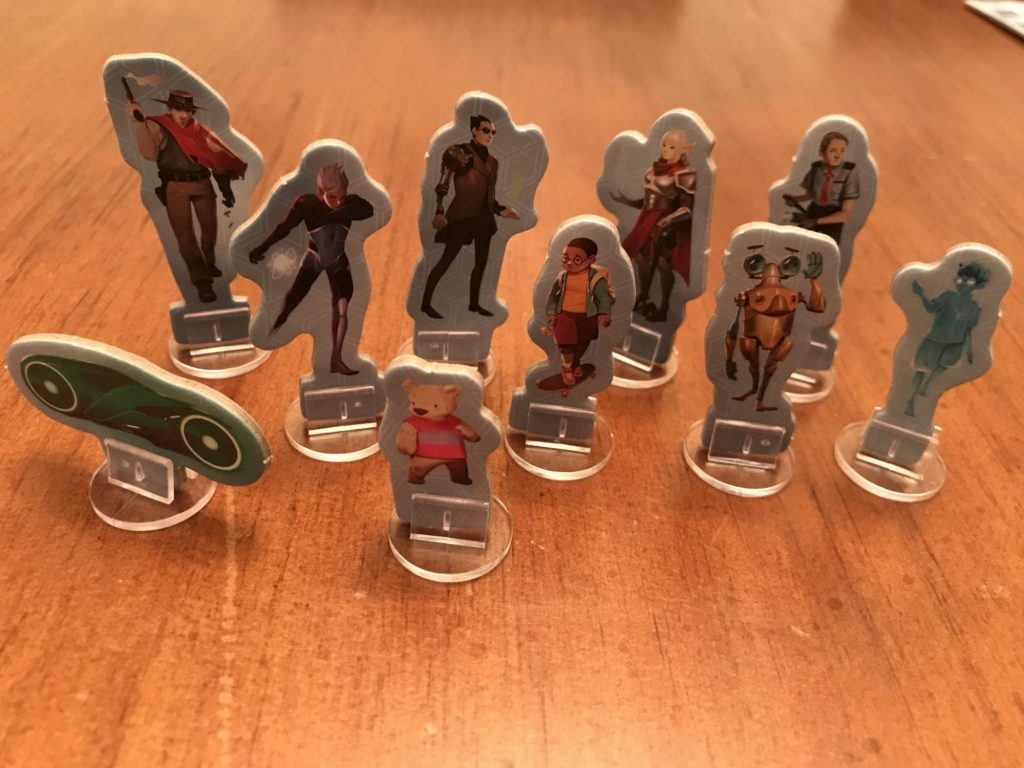
The eleven Comazones are just as diverse. I don’t want to spoil too much, but this is a strength in Comanaut’s design. Not only do the Comazone book sections look different, they often play differently. For example, one Comazone has you slinking around the dark in a futuristic office building forcing you to use stealth to survive, while another has you dodging deadly robots in a side-scrolling platform video-game world, and yet another has you driving a light-cycle! In Stuffed Fables, the environments changed but the gameplay for each page was fairly standard. In Comanauts, I loved that there was much more room to expand dramatically different gameplay designs within the core dice-drawing mechanism.
It goes without saying that Comanauts is strong in theme as well. Each Comazone has its own distinct feel, and the avatars come from these Comazones. In fact some avatars will perform better in certain Comazones than others. A robot blends in quite well in a futuristic video game world, but not so much in a Wild West dust bowl town. As players interact with the Comazones, the NPCs start to become suspicious of certain avatars which can cause them to become hostile more rapidly. This is a nice thematic touch, as essentially this represents Dr. Martin Strobal’s mind figuring out that it needs to go DEFCON to protect itself against these intruders. Furthermore as players begin to uncover the story of each Comazone, they will move more deeply into the psyche of a man who has encountered trauma. Some of these are hard to wrestle with, as they may invite us all to explore those within ourselves…
Inner Demons
Is Comanauts a dream in every regard? Not quite. I’ve found that the setup is very particular. After a few plays I still needed to very, very carefully read through each Comazone to make sure I was getting it right. There are a number of steps that don’t necessarily feel intuitive in order. And because you are deck-rigging the final “boss” of the adventure, if you mess up the placement of cards you can essentially lock yourself out of completing an adventure. This shouldn’t be too big of a deal if you follow the instructions carefully, but for the first few plays I did find it a bit cumbersome. It didn’t feel as easy to “pull out and play” as Stuffed Fables.

On that note, the adventures are much more challenging, and they can take longer. Although theoretically it’s designed to play an entire adventure in one setting, I found that I rarely could do so and needed to “save” my game. There’s no prescribed way to do this though, and I invented my own save system using good ol’ fashioned Ziploc bags. The length of your adventure is entirely dependent on how fast you can locate the Prime I.D. Entity.
In some adventures you may strike lightning and find it in your second Comazone (it’s never in your starting Comazone). And there are ways to (Quantum) leap out of one Comazone to another without working through all the pages (you can do this by finding Dr. Strobal’s “Inner Child”). But you also may also think you’re on the trail of the Prime I.D. Entity and work all the way through the Comazone pages only to discover you’ve found a lesser I.D. Entity and you’re in the wrong zone (cue inward groaning, and pulling out the aforementioned Ziploc save system). Hint: pay attention to the Entity themes on the bottom of the Comazone cards.

Finally, one of the biggest strengths of Comanauts is also one that can hinder it. Comanauts is episodic in nature. This means that you read a bit of introduction to the story, and then you jump into the mind of Dr. Martin Strobal at a non-linear point in time. You never know what point in time you’re experiencing in Dr. Strobal’s life until you start exploring that Comazone. Comanauts offers incredibly diverse gameplay, environments, and cast of characters due to its episodic nature. But because it is episodic, it can feel like there is less cohesion between each story. There is not an A-Z start and finish. Thematically your comanauts are popping in and out of someone’s memories and interacting with a thematic trauma, and it’s up to you to piece these stories together to understand the overarching life of Dr. Strobal. So while I loved the deeper individual stories in the Comazones, I didn’t feel like I connected to the world in the same way as I did with the incredibly endearing characters of Stuffed Fables, simply because I had a natural progression of getting to know them.
Coma-ought or Coma-naught?
It feels odd to say I greatly enjoyed my time inside the mind of Dr. Strobal. I mean, I was literally confronting someone’s inner demons while exposing their past traumas. But I did enjoy seeing the wonders of the subconscious and the playland it created. It is true that this is a much more “adult” version of an Adventure Book game than Stuffed Fables. While I do think many will connect with Stuffed Fables’s linear campaign more, I appreciated the new realms that Comanauts seeks to explore.

Just as my in-game avatars stood in awe of the ethereal landscapes they traversed, I too stood in awe at the realization that there is much more gaming territory to be explored with the Adventure Book system. I look forward to seeing what the creative talent brewing in the subconscious of Jerry Hawthorne develops next, and get a glimpse into the future of Adventure Book games.


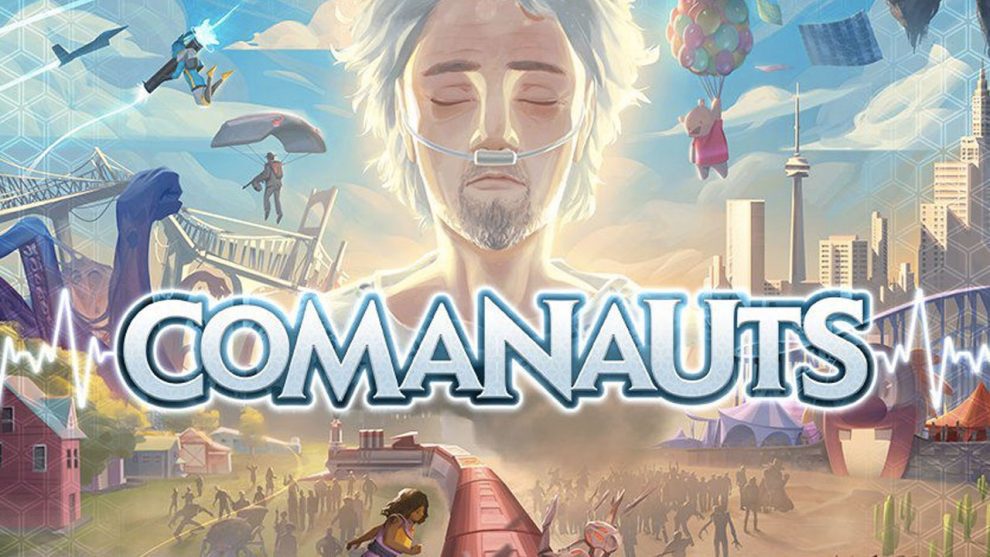



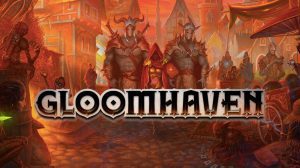
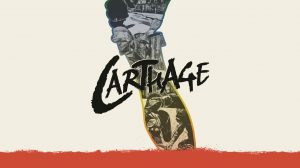




Love the avatars in this game, awesome review!